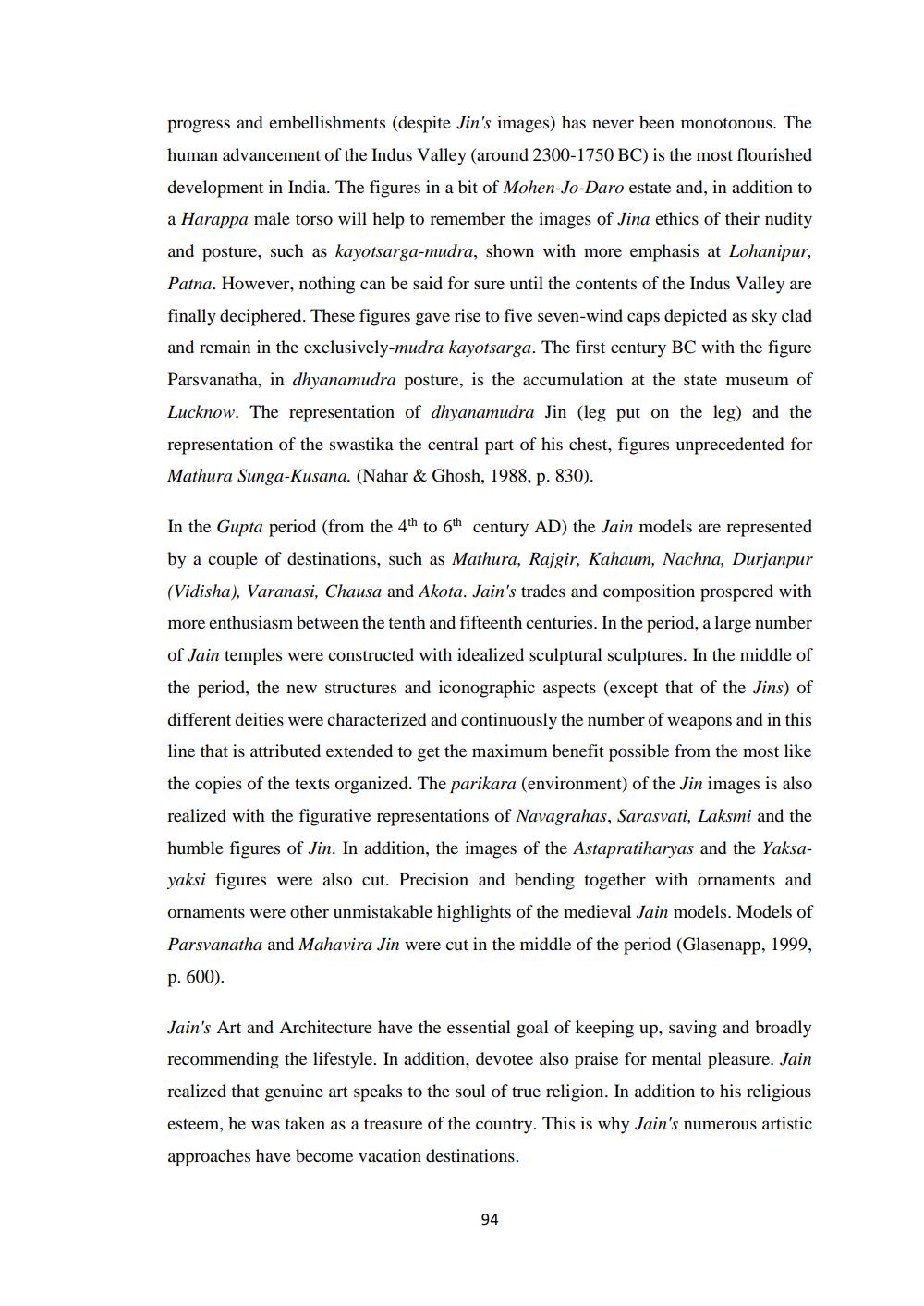________________
progress and embellishments (despite Jin's images) has never been monotonous. The human advancement of the Indus Valley (around 2300-1750 BC) is the most flourished development in India. The figures in a bit of Mohen-Jo-Daro estate and, in addition to a Harappa male torso will help to remember the images of Jina ethics of their nudity and posture, such as kayotsarga-mudra, shown with more emphasis at Lohanipur, Patna. However, nothing can be said for sure until the contents of the Indus Valley are finally deciphered. These figures gave rise to five seven-wind caps depicted as sky clad and remain in the exclusively-mudra kayotsarga. The first century BC with the figure Parsvanatha, in dhyanamudra posture, is the accumulation at the state museum of Lucknow. The representation of dhyanamudra Jin (leg put on the leg) and the representation of the swastika the central part of his chest, figures unprecedented for Mathura Sunga-Kusana. (Nahar & Ghosh, 1988, p. 830).
In the Gupta period (from the 4th to 6th century AD) the Jain models are represented by a couple of destinations, such as Mathura, Rajgir, Kahaum, Nachna, Durjanpur (Vidisha), Varanasi, Chausa and Akota. Jain's trades and composition prospered with more enthusiasm between the tenth and fifteenth centuries. In the period, a large number of Jain temples were constructed with idealized sculptural sculptures. In the middle of the period, the new structures and iconographic aspects (except that of the Jins) of different deities were characterized and continuously the number of weapons and in this line that is attributed extended to get the maximum benefit possible from the most like the copies of the texts organized. The parikara (environment) of the Jin images is also realized with the figurative representations of Navagrahas, Sarasvati, Laksmi and the humble figures of Jin. In addition, the images of the Astapratiharyas and the Yaksayaksi figures were also cut. Precision and bending together with ornaments and ornaments were other unmistakable highlights of the medieval Jain models. Models of Parsvanatha and Mahavira Jin were cut in the middle of the period (Glasenapp, 1999, p. 600).
Jain's Art and Architecture have the essential goal of keeping up, saving and broadly recommending the lifestyle. In addition, devotee also praise for mental pleasure. Jain realized that genuine art speaks to the soul of true religion. In addition to his religious esteem, he was taken as a treasure of the country. This is why Jain's numerous artistic approaches have become vacation destinations.
94




